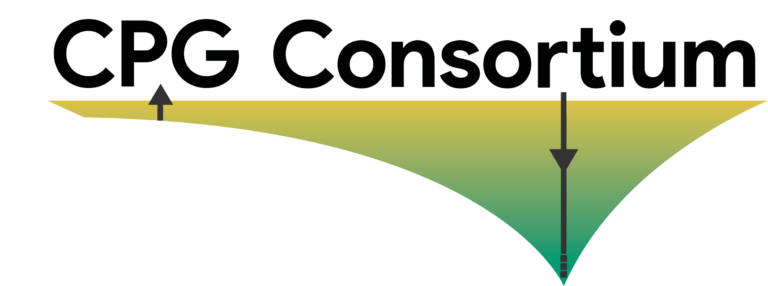
Mailing Address
Hoda Javanmard
Geothermal Energy & Geofluids
Institute of Geophysics
NO F 55
Sonneggstrasse 5
CH-8092 Zurich Switzerland
Contact
| Phone | +41 44 633 4041 |
| jhoda(at)erdw.ethz.ch |
Administration
| Dominique Ballarin Dolfin | |
| Phone | +41 44 632 3465 |
| ballarin(at)ethz.ch | |
Publications
[Go to Proceedings Refereed] [Go to Proceedings Non-Refereed] [Go to Theses]
Underlined names are links to current or past GEG members
REFEREED PUBLICATIONS IN JOURNALS
5.
Javanmard, H., M. O. Saar, and D. Vogler, On the applicability of connectivity metrics to rough fractures under normal stress, Advances in Water Resources, 161/104122, 2022. https://doi.org/10.1016/j.advwatres.2022.104122 [Download] [View Abstract]Rough rock fractures have complex geometries which result in highly heterogeneous aperture fields.
To accurately estimate the permeability of such fractures, heterogeneity of the aperture fields must be quantified.
In this study heterogeneity of single rough rock fractures is for the first time parametrized by connectivity metrics, which quantify how connected the bounds of a heterogeneous field are.
We use 3000 individual realizations of synthetic aperture fields with different statistical parameters and compute three connectivity metrics based on percolation theory for each realization.
The sensitivity of the connectivity metrics with respect to the determining parameter, i.e the cutoff threshold, is studied and the correlation between permeability of the fractures and the computed connectivity metrics is presented.
The results show that the $Theta$ connectivity metric predicts the permeability with higher accuracy.
All three studied connectivity metrics provide better permeability estimations when a larger aperture value is chosen as the cutoff threshold.
Overall, this study elucidates that using connectivity metrics provides a less expensive alternative to fluid flow simulations when an estimation of fracture permeability is desired.
4.
Lima, M., H. Javanmard, D. Vogler, M.O. Saar, and X.-Z. Kong, Flow-through Drying during CO2 Injection into Brine-filled Natural Fractures: A Tale of Effective Normal Stress, International Journal of Greenhouse Gas Control, 109, pp. 103378, 2021. https://doi.org/10.1016/j.ijggc.2021.103378 [Download] [View Abstract]Injecting supercritical CO2 (scCO2) into brine-filled fracture-dominated reservoirs causes brine displacement and possibly evaporite precipitations that alter the fracture space.
Here, we report on isothermal near-field experiments on scCO2-induced flow-through drying in a naturally fractured granodiorite specimen under effective normal stresses of 5-10 MPa, where two drying regimes are identified. A novel approach is developed to delineate the evolution of brine saturation and relative permeability from fluid production and differential pressure measurements. Under higher compressive stresses, the derived relative permeability curves indicate lower mobility of brine and higher mobility of the scCO2 phase. The derived fractional flow curves also suggest an increase in channelling and a decrease in brine displacement efficiencies under higher compressive stresses. Finally, lowering compressive stresses seems to hinder water evaporation. Our experimental results assist in understanding the behaviour of the injectivity of fractures and fracture networks during subsurface applications that involve scCO2 injection into saline formations.
3.
Javanmard, H., A. Ebigbo, S.D.C. Walsh, M.O. Saar, and D. Vogler, No-Flow Fraction (NFF) permeability model for rough fractures under normal stress, Water Resources Research, 57/3, 2021. https://doi.org/10.1029/2020WR029080 [Download] [View Abstract]Flow through rock fractures is frequently represented using models that correct the cubic law to account for the effects of roughness and contact area. However, the scope of such models is often restricted to relatively smooth aperture fields under small confining stresses. This work studies the link between fracture permeability and fracture geometry under normal loads. Numerical experiments are performed to deform synthesized aperture fields of various correlation lengths and roughness values under normal stress. The results demonstrate that aperture roughness can more than triple for applied stresses up to 50 MPa – exceeding the valid range for roughness in most previously published models. Investigating the relationship between permeability and contact area indicates that the increase in flow obstructions due to the development of new contact points strongly depends on the correlation length of the unloaded aperture field. This study eliminates these dependencies by employing a parameter known as the No-Flow Fraction (NFF) to capture the effect of stagnation zones. With this concept, a new Cubic-law-based permeability model is proposed that significantly improves the accuracy of permeability estimations, compared to previous models. For cases, where the NFF is difficult to obtain, we introduce an empirical relationship to estimate the parameter from the aperture roughness. The new models yield permeability estimates accurate to within a factor of two of the simulated permeability in over three quarters of the 3000 deformed fractures studied. This compares with typical deviations of at least one order of magnitude for previously published permeability models.
2.
Javanmard, H., M. Seyyedi, S.A. Jones, and S.M. Nielsen, Dimethyl Ether Enhanced Oil Recovery in Fractured Reservoirs and Aspects of Phase Behavior, Energy & Fuels, 2019. https://doi.org/10.1021/acs.energyfuels.9b02600 [Download] [View Abstract]The efficiency of the dimethyl ether (DME) enhanced oil recovery (EOR) technique in a fractured chalk reservoir core plug was investigated. The coreflood experiment showed that DME EOR could lead to 44.2% additional oil recovery, amounting to 80.6% of the ultimate oil recovery. A comprehensive set of laboratory experiments, including density measurements of miscible fluids, DME-induced oil swelling factor, and partition coefficient of DME between the aqueous and oleic phase, were performed. The experimental results show that the partition coefficient of DME for the mixture of DME–brine–oil can reach up to 18.3. The oil swelling factor for such a system can reach up to 2.7 under realistic reservoir conditions. Comparing this data set to the available data for other mutually soluble solvent-based EOR techniques shows that the oil swelling caused by DME is far stronger than for other common solvents. Due to the strong partitioning of DME between the phases, the DME from the DME–brine solution rapidly partitions into the bypassed oil in the low permeability matrix, which leads to strong oil swelling and production.
1.
Javanmard, H., M. Seyyedi, and S.M. Nielsen, On Oil Recovery Mechanisms and Potential of DME–Brine Injection in the North Sea Chalk Oil Reservoirs, Industrial & Engineering Chemistry Research, 57/46, pp. 15898-15908, 2018. https://doi.org/10.1021/acs.iecr.8b04278 [Download] [View Abstract]North Sea tight chalk oil reservoirs are well-known for their submicron pore throat sizes and heterogeneous porosity pattern that includes fractures and microfractures. The host rock of these reservoirs is extremely sensitive and can easily react with the injected fluid, which in turn adversely affects the permeability and thus injectivity. The combined effect of these parameters makes oil production in chalk reservoirs extremely difficult. A novel solvent-based enhanced oil recovery (EOR) method that can address these issues is investigated for the first time in the chalk reservoirs. We thouroughly investigate the oil recovery potential and dominant oil recovery mechanisms by dimethyl ether (DME)–brine injection under conditions pertinent to the North Sea tight chalk oil reservoirs. A series of systematically designed high-pressure and high-temperature flooding experiments were carried out using reservoir core and crude oil. The experimental results revealed the strong oil recovery potential of tertiary DME–brine injection with two different DME contents. Furthermore, both secondary and tertiary DME–brine injection scenarios significantly improved the oil recovery with the better performance in the secondary scenario. The results show that the dominant oil recovery mechanism is rapid and strong oil swelling is caused by the preferential partitioning of DME into the oil phase. During DME–brine injection, no indications of rock mineral dissolution and adverse effects on rock permeability were observed. This is one of the advantages of this method over CO2, CO2–water alternating gas (WAG), and alkaline injections in which the EOR agent causes calcite dissolution, wormhole formation, and scaling issues in fragile chalk reservoirs.


